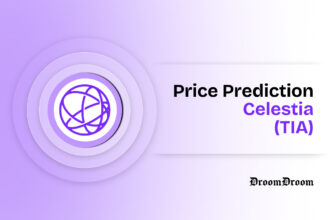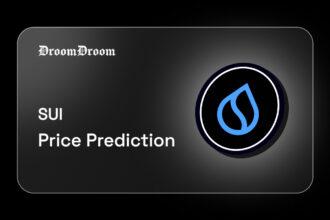Evolution of NFT analytics traces the rudimentary beginnings of data-driven insights to the sophisticated analytics tools in today’s market.
- Origin and Evolution of NFT Analytics
- Present Landscape of NFT Analytics
- Real-time Data Utilization: Detailed Token Insights
- Comprehensive Collection Exploration
- Transaction Metrics and Sales Volumes
- Forecasting through Blockchain Analytics and Algorithmic Models
- Future Horizons: Anticipated Innovations
- The Rise of AI
- Role of Blockchain in Decentralizing and Democratizing NFT Analytics
- Role of Community: Contributors and Their Incentives
- Conclusion
In Non-Fungible Tokens (NFTs), analytics have emerged as a smart solution for shaping quick, and precise decision-making for traders and investors. In an era where influencers, experts, head hunters and thought leaders once dictated market sentiments, traders and investors are now steering towards a more empirical approach.
Real-time data, blockchain analytics, and algorithmic models have become indispensable tools for those navigating the blockchain assets marketplaces.
By shedding light on the historical context, current advancements, and prospects, we are going to paint a compelling narrative of NFT analytics and the impact of artificial intelligence in empowering these analytics.
In the evolution of NFT analytics, we will also unravel the advantages of relying on data for informed decision-making.
Origin and Evolution of NFT Analytics
In 2021, NFTs spiralled to an unprecedented $24.9 billion in sales from $94.9 million in 2020, marking a pivotal moment in the world of digital assets.
The number of buyers surged from 75,144 in 2020 to an impressive 2,301,544 in 2021, reflecting an overwhelming wave of interest and participation.
Amid this explosive growth, the need for comprehensive market analysis became glaringly evident. As the NFT space expanded, navigating the multitude of blockchains and marketplaces to identify quality investments became a paramount challenge.
The sheer volume of collections, many devoid of tangible or monetary value, coupled with the emergence of fraudulent copies and deceptive practices, created a complex landscape that demanded careful scrutiny.
Entering 2022, unscrupulous activities such as wash trading began to infiltrate the market, threatening its integrity. Even amidst the surging interest in NFTs and the challenges it posed, there was a notable absence of a tailored solution for NFT analytics.
Existing analytics platforms were largely geared towards cryptocurrency metrics, DEFI, and general crypto trading, with only a handful offering rudimentary features for NFTs.
This lack of a comprehensive tool capable of covering diverse collections, marketplaces, and NFTs across numerous blockchains left a critical void in the market.
According to the Founder and CEO of bitsCrunch Vijay Pravin, the industry is heading to a future where there will be hundreds of millions of non fungible token collections. Even at the present age, there is still an absence of sufficient analytics to effectively cover the entire sector comprehensively.
Without reliable analytics, it would be impossible to flag down fakes, accurately estimate price, or even perform onchain forensics which is rapidly growing in demand due to increasing cases of blockchain crime.
Present Landscape of NFT Analytics
Evolution of NFT analytics has expanded to the utilization of advanced computing technology and sophisticated algorithms to empower investors and platforms with a wide array of reliable insights.
Active market participants now wield a formidable arsenal of advanced analytics tools that redefine decision-making and empower strategic investments. All thanks to the rise of advanced AI-powered analytics solutions like UnleashNFTs.
Let’s dive into some of the impacts of utilizing data analytics in NFTs.
Real-time Data Utilization: Detailed Token Insights
In today’s NFT market, real-time data utilization extends far beyond basic metrics. Advanced analytics platforms delve into the detailed token metadata, providing a granular understanding of individual NFTs, their unique characteristics and attributes.
Moreover, transaction history analysis of an individual token allows investors to track the journey of an NFT, from its creation to the present moment, facilitating informed decisions.
Comprehensive Collection Exploration
A pivotal aspect of advanced NFT analytics tools is the ability to conduct in-depth Collection Exploration.
This allows a third-eye when analyzing detailed metrics across a collection’s market cap, volume, floor price, total minted, and supply.
This nuanced approach allows investors to gauge the overall health and potential of a collection, making well-informed decisions based on a comprehensive understanding of the market dynamics.
Furthermore, ownership insights throughout collections add another layer of depth, with analytics platforms offering valuable data on wallet activity, collections owned, number of tokens, and ownership quantity.
Transaction Metrics and Sales Volumes
The power of real-time data in the NFT market is further exemplified through robust Transaction Metrics and Sales Volumes tracking. Investors can monitor transaction trends, and identify patterns that inform strategic decisions.
Sales Volumes data provides insights into the liquidity and demand for specific NFTs, thereby allowing investors to capitalize on emerging market trends.
Forecasting through Blockchain Analytics and Algorithmic Models
Blockchain analytics sift through vast datasets, providing a transparent view of on-chain activities. This transparency is crucial for detecting anomalies, ensuring a secure investment environment.
Algorithmic models, on the other hand, leverage predictive analytics and machine learning, offering predictive insights into market trends and potential investment opportunities.
Taking advantage of predictive models to stay ahead requires not just insights but actionable intelligence – thanks to AI, ML and data processing algorithms; this has become possible and within reach of the average NFT investor.
Future Horizons: Anticipated Innovations
The Rise of AI
Artificial Intelligence in NFT analytics will enable the combination of advanced AI algorithms and data feeds to generate accurate price estimates, provide personalized investment recommendations and simplify the process for assessing the future potential of cryptocurrencies.
Role of Blockchain in Decentralizing and Democratizing NFT Analytics
The blockchain will assume a pivotal role in decentralization and democratization of NFT analytics. Blockchain technology features like transparent and immutable nature are poised to enhance the integrity of analytics platforms.
By decentralizing data storage and processing, blockchain ensures that NFT analytics become more secure, resistant to manipulation, and accessible to a wider audience.
This decentralized approach aligns with the foundational ethos of NFTs, emphasizing democratization and inclusivity in the analytics landscape.
Role of Community: Contributors and Their Incentives
A paradigm shift awaits as the role of community becomes increasingly integral in the future of NFT analytics. The emergence of community-driven analytics platforms will see contributors actively shaping the analytical landscape.
Contributors will play a crucial role in refining data accuracy, expanding coverage, and enhancing the overall robustness of NFT analytics.
This participatory model not only ensures a diverse range of perspectives but also fosters a sense of ownership and accountability within the community, fueling the evolution of NFT analytics.
Conclusion
The NFT analytics market has large potential to disrupt how investors in the space conduct due diligence when trading digital assets and collectibles.
Criminal activities across marketplaces and collections will significantly reduce with data analytics able to uncover wash trading, NFT fakes, manipulative practices, regulatory sanctions and scams.
For newbies in the space, analytics will present an easy roadmap to uncover the top collections, as well as enable them to easily identify digital assets with immense potential.
As we enter the age where virtual worlds converge with finance, investment and tokenization, NFTs are going to play a crucial role.
By providing data analytics and onchain forensics, investors and participants will have a clear picture of everything that’s going on in the NFT landscape.




















